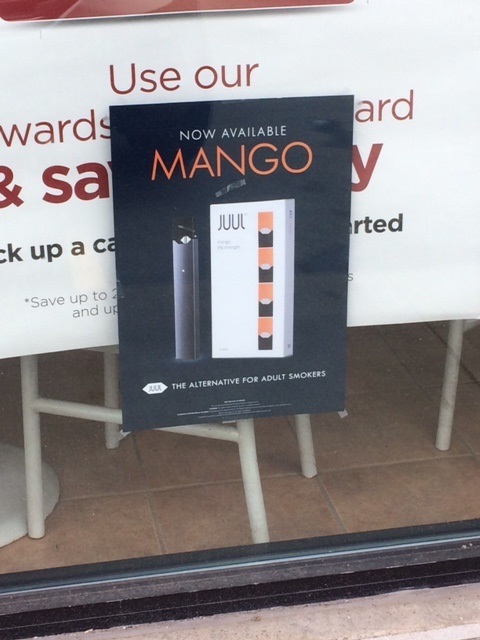Welcome to CounterTobacco.org’s “News and Research Roundup!” Each month we post a summary of the latest research, reports, and news stories on counteracting tobacco product sales and marketing at the point of sale (POS). Keeping up with what’s happening in the POS movement all across the country can help you choose policies and strategies that work best for your community. New research can help provide support for your work and evidence for the importance of the “War in the Store.” Have a story you don’t want us to miss? E-mail it to us!
New Research
- Neighbourhood tobacco supply and individual maternal smoking during pregnancy: a fixed-effects longitudinal analysis using routine data, Tobacco Control
- This longitudinal study conducted in Scotland between 2000 and 2015 compared changes in smoking behavior in the same women across multiple pregnancies and residential moves. They found that pregnant women who lived in an area with high retailer density were 67% more likely to be smokers than pregnant women living in an area with low retailer density, even when controlling for income, year of delivery, mother’s age, urbanicity, and neighborhood maternal smoking prevalence.
- News story: High availability of tobacco raises smoking rates in mothers-to-be, EurekAlert!
- Learn more about strategies to reduce retailer density.
- How Low-Income Smokers in New York Access Cheaper Cigarettes, American Journal of Health Promotion
-

Smoke shop in Western NY This qualitative focus group study explored the process of obtaining cigarettes and the impact of cigarettes prices among low-income adults who smoke regularly in New York City and Buffalo, NY. The study found that some smokers in Buffalo, NY obtained untaxed cigarettes from Native American reservations to avoid higher prices, whereas smokers in New York City obtained bootlegged cigarettes in local neighborhood stores where they knew the retailer, through other people they knew, or on the street. In Buffalo, some smokers also used coupons to reduce the price they paid when not purchasing from reservation retail stores, but coupon redemption in prohibited in New York City. The access to cheaper cigarettes among this group of smokers was cited as a barrier to quitting. Increasing access to evidence-based quitting methods and media efforts to promote quitting may help increase the impact of high cigarette prices on smoking across all income levels.
- Learn more about increasing tobacco prices through non-tax approaches.
-
- Retailers’ perspectives on selling tobacco in low-income San Francisco neighbourhood after California’s $2 tobacco tax increase, Tobacco Control
- Following California’s $2 cigarette tax increase, researchers interviewed 38 corner stores in the Tenderloin neighborhood of San Francisco, the city’s district with the highest tobacco retailer density. Most retailers reported declines in cigarette sales for a variety of reasons, including customers buying fewer cigarettes, switching to cheaper brands, switching to cigars, or switching to marijuana. However, they also reported concerns about their customers’ health and well-being, and not many had formal ties with the tobacco industry. Researchers suggest that small, independent retailers may be important allies and stakeholders in point-of-sale tobacco control efforts.
- Youth Access to Tobacco Products in the United States: Findings from Wave 1 (2013-2014) of the Population Assessment of Tobacco and Health (PATH) Study, Nicotine &Tobacco Research
- Youth ages 15-17 were most likely to cite social sources as their usual way to obtain tobacco, whether they were offered it or asked someone to buy it for them. However, “bought by self” was the usual source for 23.2% of youth who used smokeless tobacco, 21% for cigarillos, 13.8% for cigarettes, 12% for hookah, and 10.5% for e-cigarettes. When youth bought the tobacco themselves, they usually did so at a convenience store or gas station. When attempting to purchase tobacco products, only 24.3% of youth were refused sale for cigarettes, 23.9% for cigarillos, and 13.8% for smokeless tobacco. Researchers conclude that monitoring illicit youth sales, conducting compliance check inspections, and penalizing violations remain important to reduce youth tobacco access at retail venues
- Prevalence and correlates of JUUL use among a national sample of youth and young adults, Tobacco Control

Juul ad for “mango” flavor - This national survey of 15-34-year-olds found that participants under 21 were more likely to be JUUL users than older participants. Among 15-17-year-olds who were current users, 55.8% reported use of JUUL on 3 or more days in the past month and over 25% reported use on 10-30 days. Participants who were white, had greater financial comfort, perceived Electronic Nicotine Delivery Systems (ENDS or e-cigarettes/vapes) as less harmful than cigarettes, had a member of their household who uses ENDS, were high sensation seeking, and who currently use combustible tobacco use were also more likely to currently use JUUL.
- Examining the relationship of vaping to smoking initiation among US youth and young adults: a reality check, Tobacco Control
- Looking at population-level data and trends and controlling for previous trends, this study finds that “the downward trend in both current use and more established cigarette use substantially accelerated among US youth and young adults once vaping became popular.” The researchers assert that, “While trying electronic cigarettes may causally increase smoking among some youth, the aggregate effect at the population level appears to be negligible given the reduction in smoking initiation during the period of vaping’s ascendance.”
Industry News
- Altria in Talks with Juul for Minority Stake, CSP Daily News
- Big Tobacco not sweating proposed FDA curb on flavored cigarettes, CBS News
- The Double Jeopardy of Tobacco Regulation, CSP Daily New
POS Policy in the Media
- FDA unveils sweeping anti-tobacco effort to reduce underage vaping and smoking, Washington Post
- The Briefcase: Cigarette packaging corrective statements to begin, Winston-Salem Journal
- Helena commissioners ban self-service tobacco displays, exempt adult-only retailers, KPVI
- Cigarette filters do more harm than good, Ecologist
- L.A. County to Ban Tobacco Shops in Residential Areas, My News LA
Menthol and Other Flavored Tobacco Products
- FDA plans to restrict flavored e-cigarette sales to vape shops, ban menthol cigarettes from market, CNBC
- Sale of Flavored Tobacco, Vaping Banned in Marin County, San Francisco CBS Local
- New York to ban flavored e-cigarettes next year, New York Post
- San Pablo set to ban sales of flavored tobacco products, Richmond Standard
- Alderman, trying to quit, wants city to ban menthol-flavored tobacco products, Chicago Sun-Times
- Mashpee Health Board Bans Sale of Flavored Tobacco, Cape News
- Alameda, Calif. Passes Flavored Tobacco Ban, Retailer Licenses, HalfWheel
E-Cigarettes
- FDA says it had ‘constructive’ meetings with e-cigarette manufacturers on teen epidemic, CNBC
- Juul Offered to Pay School Systems to Develop Vaping Curriculums Blaming Peer Pressure, Report Says, Fortune
- Colorado steps up efforts to curb “epidemic” of teen vaping with increased check on retailers, health advisories, The Denver Post
- Juul Will Suspend Selling Most E-Cigarette Flavors in Stores and Halt Social Media Promotions, New York Times
- Blu e-cigarette maker plans to restrict online sales amid FDA crackdown on teen use, CNBC
- Juul Lobs Second Round of Suits Against E-Cigarette Rivals, Bloomberg
- Public Health Experts on New FDA E-Cigarette Rules: It’s Complicated, Forbes
Tobacco 21
- Age 21 initiative for tobacco products shifts from unfathomable to likely with manufacturers’ support, Winston-Salem Journal
- Hermantown City Council Approves Raising Age to Buy Tobacco to 21, Fox 21 Local News
- Hoffmann Estates joins in raising smoking age to 21, Daily Herald
- Otter Tail first county in Minnesota to raise tobacco purchasing age, West Central Tribune
- Brooklyn Center raises minimum age to buy tobacco products to 21, Star Tribune
- Mendota Heights, Minn. To Increase Tobacco Purchase Age to 21, HalfWheel
Find more stories in last month’s News and Research Roundup.
Know of a story that we missed? Email us, and we’ll be sure to include it in next month’s roundup!


